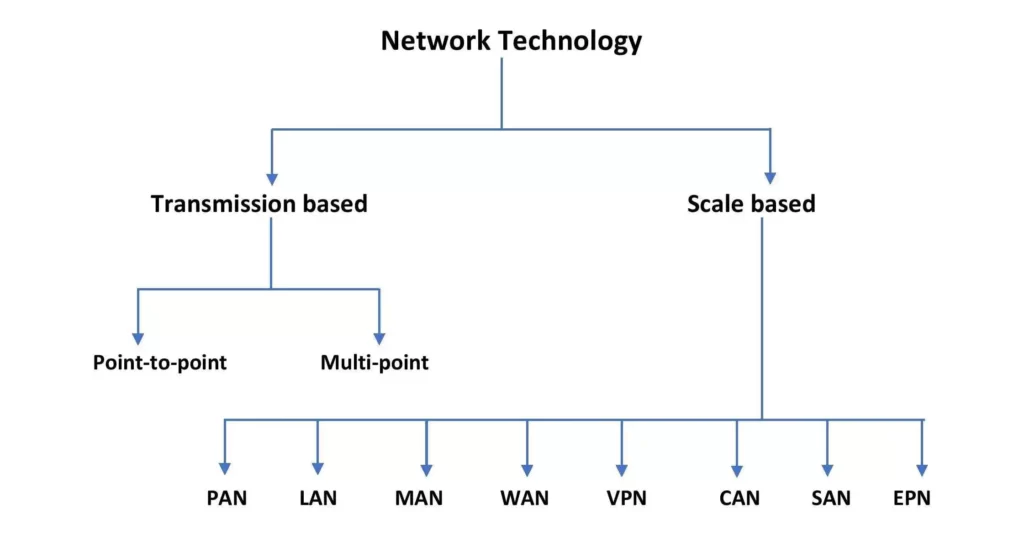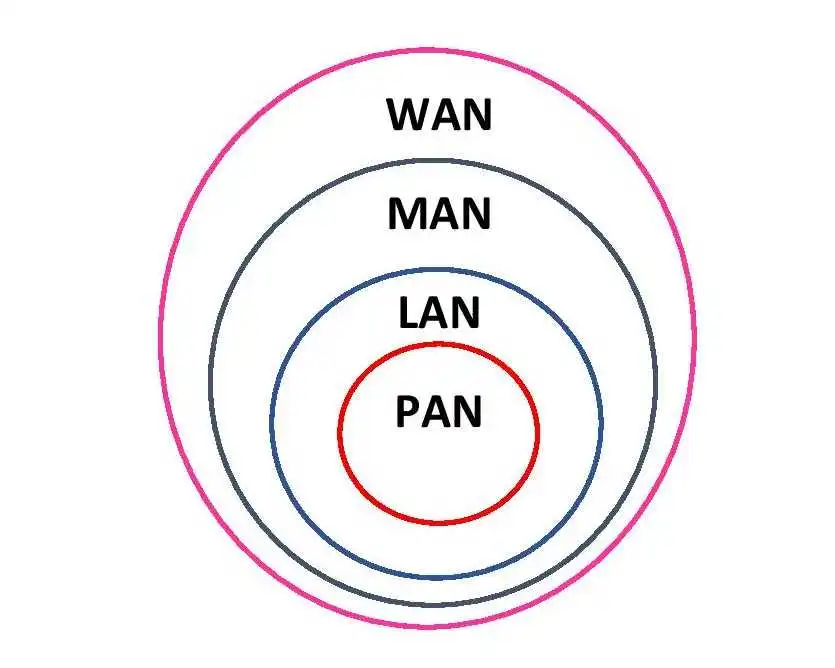Companies, institutions and industries require a system that interconnects their Computers or information devices to build up fast and secure communication. Suppose you work in a large institution that has many departments and sections and you need to collect electronic data in a computer of your department from any other department. For this, you need a network system that connects those computers. Internet Networks provide such facilities. In this article, we are going to discuss different types of internet networks that are used to connect electronic systems in a region.
What are internet networks?
The Computer Network is a technology that helps to interconnect the computers and other electronic devices of a company or institution to develop a fast and secure communication system. Using an internet connection, an institution can transmit or exchange electronic data in different sections or departments or infrastructures via its computer system. Network administrators control this type of technology.
Computer internet networks, mobile internet networks, device networks, etc. are the applications of Network technologies.
- Computer networking is the system that exchanges data between computers.
- A Mobile network is a system that enables the exchange of data among mobiles.
- A Device network is a system that allows the exchange of data among any electronic devices like computers, mobiles, tablets, etc.
Different types of internet Networks

There are mainly two types of Internet Network technologies in Computers –
- Transmission-based network technologies
- Scale-based network technologies
Internet Networks based on transmission
One can set up a transmission networking system using two different concepts –
- Point-to-point concept
- Multi-point concept
Point-to-point concept of transmission Network Technologies
In the case of point-to-point networking, nodes in the network are connected directly. The data can be transmitted directly from one device to another. The transmission of data takes place via a guided medium for the wired network and via an unguided medium for the wireless network.
Multi-point concept of transmission Network Technologies
To transmit the data from one device to several devices we need to develop a network technology based on a multi-point concept. In this networking system, several nodes are connected linearly via a common medium.
Internet Networks based on scale

There are different types of internet networking based on scale. The main 4 types of networking are as follows –
- Personal Area Network (PAN)
- Local Area Network (LAN)
- Metropolitan Area Network (MAN)
- Wide Area Network (WAN)
Apart from these, Virtual Private Network (VPN), Campus Area Network (CAN), Storage Area Network (SAN), Enterprise Private Network (EPN), etc. are examples of scale-based internet networking.
PAN
PAN stands for Personal Area Network. It is a computer networking system that connects electronic devices inside a very small area. PAN is used for personal purposes. It uses some low-powered devices like Bluetooth, USB, ZigBee, etc. to exchange data within a small range of distance (typically 10-15 meters).
LAN
The full form of LAN is Local Area Network. LAN is a computer internet network that connects computers and laptops inside a small area or local area like a department of any college or university, a building like a hostel or other residence, etc. The typical range of a LAN network is about 100 m to 10 km. LAN can be both wired and wireless. A wired LAN requires cables and ports or Ethernet to connect computers inside this range and most of the wireless LANs use Wi-Fi to connect the computers, laptops, tablets and smartphones in its range.
MAN
MAN stands for Metropolitan Area Network. Its name itself suggests the range of this network. MAN is a computer network that connects computers and laptops inside a metropolitan area or any other geometrical area of the size of a Metropolitan. It is a bigger network than the LAN. MAN is the interconnection of LANs in a metropolitan area.
WAN
The full form of WAN is Wide Area Network. A WAN connects users via computers, laptops, smartphones, etc. across a wide geographic area. In WAN, a group of nodes is interconnected by telecommunication links that help to exchange messages and other data among the users. The Internet is an example of a WAN. All LANs and MANs are connected to WAN to provide connections among the users.
VPN
The term VPN has the full form of Virtual Private Network. It is a private network that enables users to send and receive data across the public network secretly without any limit. One can also change the location and IP address of a device by connecting it to another VPN. There are three types of VPN –
- Remote access
- Site-to-site VPN
- Extranet-based site-to-site VPN
Advantages of Internet Network Technologies
Now, what are the advantages of computer network technologies? Here is a complete list of advantages –
- Computer networking makes the communication system very easy. In early days, we had to go physically to send a message at any place. Now, we can instantly exchange such messages sitting in our home or office.
- Physical communication was very costly due to the transportation costs and others. But we can communicate with people using network technologies at a minimal cost of money.
- Computer network technologies are highly flexible.
- It is a time-saving technology.
- We can share text, audio, and video with any users connected with this technology.
Disadvantages of Internet Network Technologies
Besides the advantages, computer network technologies also have some disadvantages which are listed below.
- Networking technology has a risk of data being stolen.
- To control this technology we need efficient technicians.
- There is a possibility of attacking the devices with viruses and malware.
- It needs an exclusive set-up to use which is hard to handle for many people.
- Computer internet networks are harmful to birds and some other animals. Even humans can also be affected by these technologies.
This is all from this article on Internet Networks that can be used to connect different Computers in a region. If you have any doubts or queries on this topic you can ask me in the comment section.
Thank you.
Related posts:
Comments are closed.